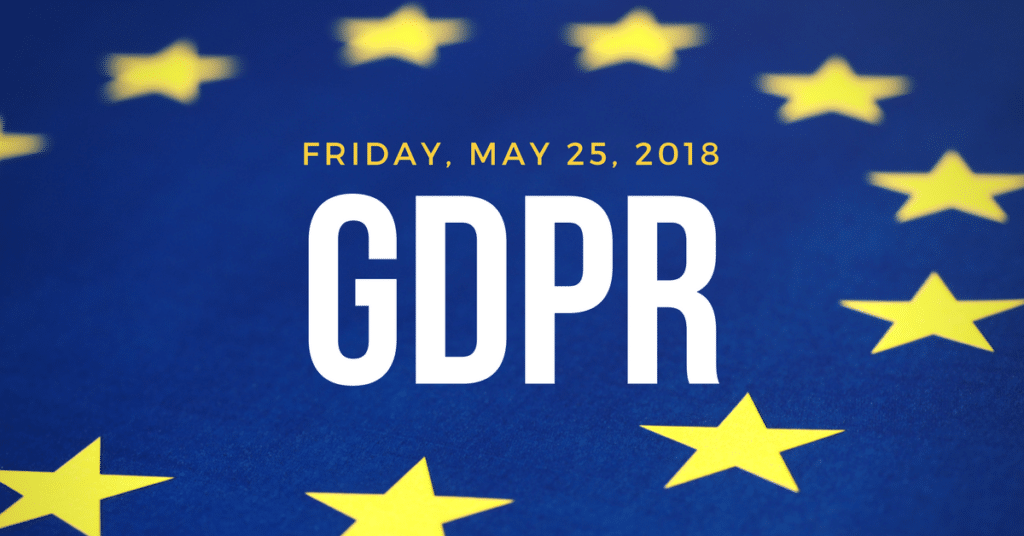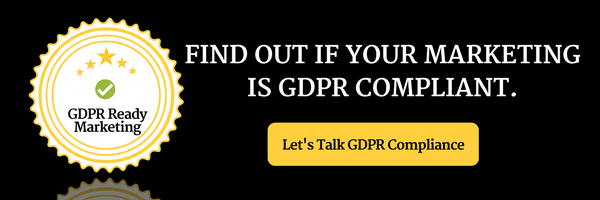GDPR for B2B Marketers
Its currently on everyones lips and while some are well-prepared others are in a state of near panic with the upcoming GDPR legislation. Over the past three months, we have spoken to a wide range of businesses who are at differing stages of readiness and many are failing to understand what affects GDPR will have on the way their business operates and how they go to market.

For many B2B marketers, there will need to be a fundamental shift in the way they work, there will definitely be a pre-GDPR and a post-GDPR world and the feel like very different places. Even those that have made the leap to inbound marketing will have to evolve their approach to ensure that doesn’t fall foul of the regulations. When you look at the implications of GDPR on B2B businesses there are many and marketers are thinking where does this leave me? Over the last couple of months, I’ve also spoken to marketers who are having philosophical debates in their own head about the future role of marketing. But as I’ve talked about in previous articles GDPR can be seen as a fantastic opportunity for marketers to be far more targeted, relevant and effective. There are many people who are collecting endless reams of data with a little view on its value or future purpose. A recent study claims 86% of all data collected and stored will never be used again and we certainly know it won’t translate into business value and leads for your sales team.
The fundamental change that is about to take place will mean we all need to reflect seriously on the data we collect, why we collect it and what we use it for. Embracing a more practical view of the data we store will lead to more effective segmentation and messaging – and it will result in marketing practices that aren’t the old-fashioned ‘spray and pray’ approach.
What is the difference between GDPR with B2B and B2C?
In reality, GDPR doesn’t discriminate between B2B and B2C communications and data. To be clear B2B contacts will be required to provide you with consent to be marketed to. You as the data controller will also be able to prove consent for each individual record that you hold. Consent means an individual has explicitly requested that you send them information. You have to be clear about what information you are going to send and you can’t send any information that falls outside of that definition. It’s worth noting here that there is an exception for existing customers and prospects where there is a requirement that affects a potential or contracted business.
In order to remain compliant the burden of proof is on you to prove consent. That means you need a system and process to ensure this is captured and stored. This could be your CRM or Marketing Automation Platform. In an ideal world, you should be moving towards double opt-in standards where a someone enters their detail into a form you email them to confirm they wish to opt-in. This is a process which I’d encourage everyone to pursue as it removes the risk of someone signing up in error or because of the ambiguity of messaging.
How do I get opt-in to my existing database?
The first most logical step is to create and run a re-permission campaign to ensure your data set is up to scratch for the 25th May 2018. At the time of writing, I haven’t received a huge amount of re-engagement emails – but I’d imagine in the final weeks (and the weeks’ post) 25th May there will be a tidal wave of campaign ensuring that people have provided consent. With that potential inbox busting onslaught it’s massively important that your re-engagement emails are creative, stand out and encourage your prospects to actively opt-in.

How to build a successful re-permission campaign?
You’re asking people to respond to a very simple question – can I continue to market to you. Now like any situation there is a level of creativity and finesse that will be required to ensure you get a positive response from your existing database. You’ll need to set very clear expectations and provide the recipients with a simple Yes/No call to action. Not only will this get you on the route to GDPR compliance it might also give you an opportunity to engage cold prospects and demonstrate the value that you expect to bring to their lives.
To demonstrate the value you need to articulate how you intend to market to that contact, what they should expect to receive, how often they should expect to receive it and also how to remove themselves from the marketing process at a later date. Personally, I’m taking this an opportunity to better segment the communications we send to clients. Newsletter, promotional, premium content, research, surveys, offers, events promotion, introductions, incentives are just some of the email types you might send to your user base – you should make sure you allow them to opt-in or out of every single type of communication. This gives your contacts to better tailor communications they receive. It also gives you specifics of what interests and motivates your subscribers and you can better start to tailor messaging and calls-to-action.
Much like any other email campaigns, the reason your customers open your emails and sign up to receive more. It’s important to make it crystal clear that you intend to share further information and to actively market to your contact.
You must it clear that the intent of the opt-in is for further marketing, not the deal. But a tempting offer improves email open rates and drive positive sentiment. Running a campaign to explicitly gain opt-in is for the time just one area you should focus time and effort, but there are a number of benefits that you’ll gain like increased open and click rates and hopefully increased conversion of leads. This process will lay the foundations to ensure that you move towards compliance for GDPR.
